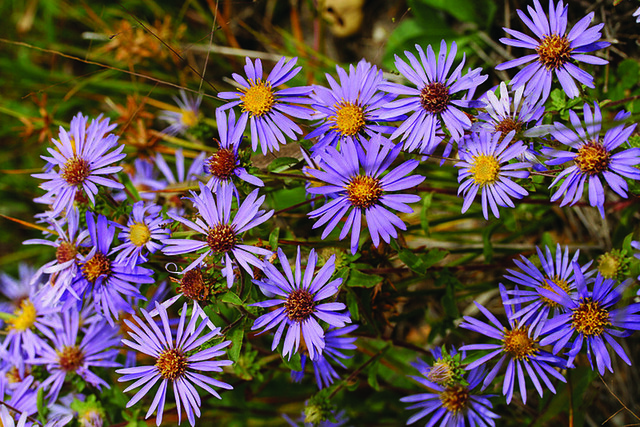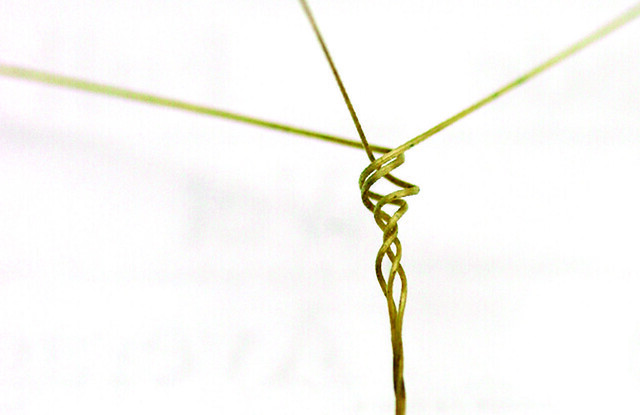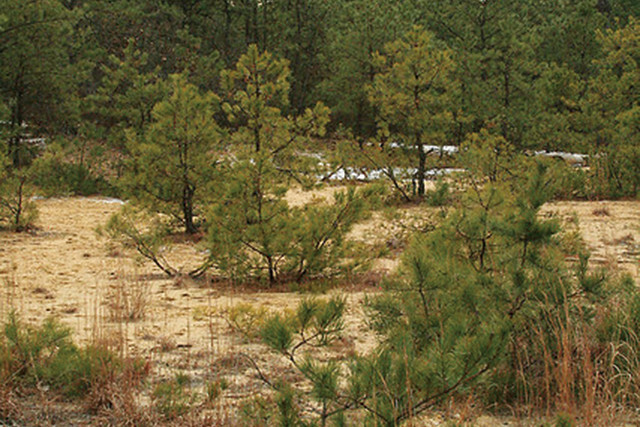You won’t find many of the species growing in the Native Flora Garden expansion at a typical nursery. Most came from seeds collected in the wild by me by me and other horticulturists and botanists from BBG along with our partners at the Greenbelt Native Plant Center. We applied for permits to visit several natural areas many times over three years to capture our specimens at the just the right time. The seeds we gathered were then propagated by Greenbelt staff, which was no easy task. They often had to improvise to create the precise conditions required to make the seeds germinate. Here are a few examples of our finds.
Eastern Showy Aster

Asters, like dandelions and other composite-structured flowers, are wind dispersed, so to collect seeds, you have to go at just the right time—late enough that enough seeds have matured, but before they’ve blown away. You also want to collect from as many flowers as possible to increase genetic diversity. We collected only from large stands and always left at least two thirds of the flowers, enough for them to propagate. The actual collection is pretty easy—just pick the flower heads and bag them up in paper.
Seaside Threeawn Grass

The seed of this beach grass is at the base of its vertical shaft. At the top you see the three awns. They’re tightly twisted when dry, but when they get wet, they unwind to drill the seed into the sand. We collected the seeds by stripping them off the top of the plant by hand. We had to be careful, though, because they’re a bit prickly.
Blackjack Oak

Collecting acorns is just a matter of going out at the right time and picking them up off the ground before the squirrels get to them. Then they have to be buried fairly deeply to germinate. We have about 20 saplings in the garden that were grown from acorns gathered from this former bog-iron site.
Pitch Pine

Pinecones can also be picked up off the ground, but the best ones—those that are most viable—are usually still attached to the tree, so we use pole pruners to collect them. In nature, their seeds are dispersed during forest fires; to propagate them, we put them on a baking sheet in a 200°F oven until we hear them pop. Inside the cone, the seeds have a winged structure similar to a maple’s.